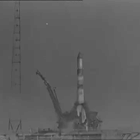 The Soviet Union launches Venera 1, the first interplanetary space probe. Bound for Venus, Venera 1 returns measurements and observations taken during its three-month flight, but loses contact with ground controllers just as it makes its closest approach to Venus at a distance of 62,000 miles from the planet. It falls into an orbit around the sun after falling silent.
The Soviet Union launches Venera 1, the first interplanetary space probe. Bound for Venus, Venera 1 returns measurements and observations taken during its three-month flight, but loses contact with ground controllers just as it makes its closest approach to Venus at a distance of 62,000 miles from the planet. It falls into an orbit around the sun after falling silent.

 In the journal Science, Carl Sagan proposes an audacious scheme to alter the chemistry of the atmosphere of Venus, making it habitable for humans. His plan involves depositing algae colonies into the planet’s clouds to begin converting the planet’s carbon dioxide into breathable oxygen, and the idea is years ahead of its time (and will later prove to be impractical when more direct studies are made of the Venusian atmosphere).
In the journal Science, Carl Sagan proposes an audacious scheme to alter the chemistry of the atmosphere of Venus, making it habitable for humans. His plan involves depositing algae colonies into the planet’s clouds to begin converting the planet’s carbon dioxide into breathable oxygen, and the idea is years ahead of its time (and will later prove to be impractical when more direct studies are made of the Venusian atmosphere).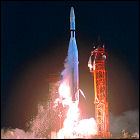 NASA launches the JPL-built unmanned space probe Mariner 1, the first of two identical spacecraft intended to study the planet Venus. Mariner 1’s mission, however, is cut short before it even leaves Earth’s atmosphere: a communication loss between its Atlas-Agena booster rocket and ground-based control systems sends the rocket off course. Fearing that it might tumble into the Atlantic Ocean’s heavily traveled shipping lanes, NASA orders the vehicle to self-destruct in mid-air. Many later accounts lay the blame at an error in the code loaded into the rocket’s on-board guidance computer. Mariner 1’s mission objectives are transferred to its identical twin, Mariner 2, due to be launched in just over a month.
NASA launches the JPL-built unmanned space probe Mariner 1, the first of two identical spacecraft intended to study the planet Venus. Mariner 1’s mission, however, is cut short before it even leaves Earth’s atmosphere: a communication loss between its Atlas-Agena booster rocket and ground-based control systems sends the rocket off course. Fearing that it might tumble into the Atlantic Ocean’s heavily traveled shipping lanes, NASA orders the vehicle to self-destruct in mid-air. Many later accounts lay the blame at an error in the code loaded into the rocket’s on-board guidance computer. Mariner 1’s mission objectives are transferred to its identical twin, Mariner 2, due to be launched in just over a month.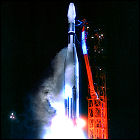 NASA launches its first interplanetary spacecraft, the unmanned space probe Mariner 2, en route to Venus. During its three-month trip from Earth to Venus, Mariner 2 takes measurements of solar wind, charged particles, and an experiment is included to measure the amount of dust and micrometeoroids between the two planets. The probe briefly loses attitude control several times in flight, but regains proper orientation in each instance.
NASA launches its first interplanetary spacecraft, the unmanned space probe Mariner 2, en route to Venus. During its three-month trip from Earth to Venus, Mariner 2 takes measurements of solar wind, charged particles, and an experiment is included to measure the amount of dust and micrometeoroids between the two planets. The probe briefly loses attitude control several times in flight, but regains proper orientation in each instance.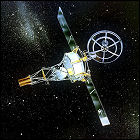 NASA’s unmanned Mariner 2 probe is the first unmanned spacecraft to successfully reach and take measuresments of another planet in the solar system. Passing by Venus at a distance of 25,000 miles, Mariner 2 detects a cool atmosphere with a blistering hot surface underneath it – quickly dispelling any hopes of finding life there. Mariner 2 isn’t equipped with any cameras, which is just as well: unless any cameras had ultraviolet filters, they would have seen nothing but featureless clouds at Venus. Mariner 2 continues on into a solar orbit, shutting down early in 1963.
NASA’s unmanned Mariner 2 probe is the first unmanned spacecraft to successfully reach and take measuresments of another planet in the solar system. Passing by Venus at a distance of 25,000 miles, Mariner 2 detects a cool atmosphere with a blistering hot surface underneath it – quickly dispelling any hopes of finding life there. Mariner 2 isn’t equipped with any cameras, which is just as well: unless any cameras had ultraviolet filters, they would have seen nothing but featureless clouds at Venus. Mariner 2 continues on into a solar orbit, shutting down early in 1963.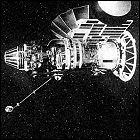 The Soviet Union launches the space probe Zond 1 toward Venus, a more sophisticated version of the Venera 1 vehicle sent to that planet in 1961. Thanks to an electrical short within the Zond space probe, ground controllers lose all contact a month after it leaves Earth; by the time it swings past Venus at over 60,000 miles months later, Zond 1 has shut down completely.
The Soviet Union launches the space probe Zond 1 toward Venus, a more sophisticated version of the Venera 1 vehicle sent to that planet in 1961. Thanks to an electrical short within the Zond space probe, ground controllers lose all contact a month after it leaves Earth; by the time it swings past Venus at over 60,000 miles months later, Zond 1 has shut down completely.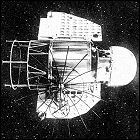 The Soviet Venera 2 space probe is launched toward Venus, and for the first time cameras are placed aboard a vehicle bound for that planet. Venera 2 will eventually pass within 14,000 miles of its target, but electrical failures silence the space probe and its instruments long before the flyby.
The Soviet Venera 2 space probe is launched toward Venus, and for the first time cameras are placed aboard a vehicle bound for that planet. Venera 2 will eventually pass within 14,000 miles of its target, but electrical failures silence the space probe and its instruments long before the flyby.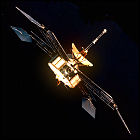 A near-identical twin of NASA/JPL’s unmanned Mariner 4 Mars probe, Mariner 5 lifts off en route to the planet Venus. Though the space probe’s architecture is similar to that of Mariner 4, Mariner 5 is modified to include solar shades to keep parts of the spacecraft cool, a problem which doesn’t exist at Mars. Mariner 5 takes almost exactly four months to reach Venus.
A near-identical twin of NASA/JPL’s unmanned Mariner 4 Mars probe, Mariner 5 lifts off en route to the planet Venus. Though the space probe’s architecture is similar to that of Mariner 4, Mariner 5 is modified to include solar shades to keep parts of the spacecraft cool, a problem which doesn’t exist at Mars. Mariner 5 takes almost exactly four months to reach Venus.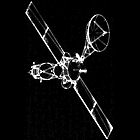 A working group of scientists and engineers at NASA submit an official proposal for a spacecraft using synthetic aperture radar to map the surface of the planet Venus. Conceived as a mission that could be launched from a Titan IIIe or from the space shuttle, both of which still exist only on the drawing board, Venus Orbiter Imaging Radar (or VOIR) is designed to offer extensive mapping of Venus at a resolution much better than the coarse resolution of radar signals originating from Earth-based radio astronomy facilities such as Arecibo, along with such cutting-edge technologies as stereoscopic imaging and solar electric propulsion. Work on this mission will continue through the early 1980s, at which point it is cancelled by NASA and replaced by a cheaper mission intended to achieve the same goals, Magellan.
A working group of scientists and engineers at NASA submit an official proposal for a spacecraft using synthetic aperture radar to map the surface of the planet Venus. Conceived as a mission that could be launched from a Titan IIIe or from the space shuttle, both of which still exist only on the drawing board, Venus Orbiter Imaging Radar (or VOIR) is designed to offer extensive mapping of Venus at a resolution much better than the coarse resolution of radar signals originating from Earth-based radio astronomy facilities such as Arecibo, along with such cutting-edge technologies as stereoscopic imaging and solar electric propulsion. Work on this mission will continue through the early 1980s, at which point it is cancelled by NASA and replaced by a cheaper mission intended to achieve the same goals, Magellan.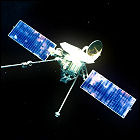 The first unmanned space probe to use a gravity assist maneuver to get from one planet to another in a reduced amount of time, Mariner 10 is lauched on a course for the planet Venus, where a carefully planned trajectory allows it to take pictures and measurements at that planet before using Venus’ gravity to fling Mariner 10 inward toward Mercury, allowing it to reach two planets in under two months. It will be the first space probe to visit Mercury.
The first unmanned space probe to use a gravity assist maneuver to get from one planet to another in a reduced amount of time, Mariner 10 is lauched on a course for the planet Venus, where a carefully planned trajectory allows it to take pictures and measurements at that planet before using Venus’ gravity to fling Mariner 10 inward toward Mercury, allowing it to reach two planets in under two months. It will be the first space probe to visit Mercury. The unmanned Mariner 10 space probe swings past the planet Venus at a distance of less than 4,000 miles, its cameras capturing a completely opaque sphere whose clouds reveal no surface. But when viewed through ultraviolet filters, Venus suddenly reveals an immense amount of atmospheric detail. Mariner 10’s UV views of Venus are the best images available until the dual Pioneer Venus mission of the late 1970s; meanwhile, Mariner 10 speeds past the planet en route to Mercury.
The unmanned Mariner 10 space probe swings past the planet Venus at a distance of less than 4,000 miles, its cameras capturing a completely opaque sphere whose clouds reveal no surface. But when viewed through ultraviolet filters, Venus suddenly reveals an immense amount of atmospheric detail. Mariner 10’s UV views of Venus are the best images available until the dual Pioneer Venus mission of the late 1970s; meanwhile, Mariner 10 speeds past the planet en route to Mercury. The Soviet
The Soviet  Launched less than a week after history-making sister ship Venera 9, the unmanned Soviet space probe
Launched less than a week after history-making sister ship Venera 9, the unmanned Soviet space probe 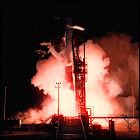 NASA launches the 1,100 pound Pioneer Venus Orbiter, designed to orbit Venus for a year to study the planet’s atmosphere and its interaction with other space phenomena. Though launched separately, the two Pioneer Venus spacecraft will arrive at Venus within days of one another in December 1978. The Orbiter takes radar observations of the cloud-shrouded planet, from which the first surface map of Venus is derived. As with many other unmanned NASA spacecraft designed for relatively short-duration missions, the Pioneer Venus Orbiter outlives its design lifespan, staying fully functional into the 1990s and eventually becoming the only American spacecraft to view Halley’s Comet in 1986.
NASA launches the 1,100 pound Pioneer Venus Orbiter, designed to orbit Venus for a year to study the planet’s atmosphere and its interaction with other space phenomena. Though launched separately, the two Pioneer Venus spacecraft will arrive at Venus within days of one another in December 1978. The Orbiter takes radar observations of the cloud-shrouded planet, from which the first surface map of Venus is derived. As with many other unmanned NASA spacecraft designed for relatively short-duration missions, the Pioneer Venus Orbiter outlives its design lifespan, staying fully functional into the 1990s and eventually becoming the only American spacecraft to view Halley’s Comet in 1986.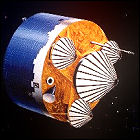 Trailing its supporting orbiter by several months, the Pioneer Venus Multiprobe – also known as Pioneer 13 – lifts off en route to deposit its payload of four atmospheric entry probes designed to measure the planet’s inhospitable, poisonous atmosphere. Following the launch of those probes, the Multiprobe carrier vehicle will then enter the atmosphere of Venus itself and take measurements, burning up before it ever reaches the surface.
Trailing its supporting orbiter by several months, the Pioneer Venus Multiprobe – also known as Pioneer 13 – lifts off en route to deposit its payload of four atmospheric entry probes designed to measure the planet’s inhospitable, poisonous atmosphere. Following the launch of those probes, the Multiprobe carrier vehicle will then enter the atmosphere of Venus itself and take measurements, burning up before it ever reaches the surface.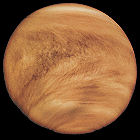 NASA’s unmanned Pioneer Venus Orbiter completes its radar mapping survey of the planet Venus, having used radar to create the first-ever topographical map of that world, which is usually hidden behind a thick, toxic cloud deck. Launched in 1978, Pioneer Venus Orbiter is the only surviving component of the two-vehicle Pioneer Venus mission, but with its solar arrays still gathering adequate power and all of its instruments still functioning well, the orbiter is not deactivated or deorbited at this time; future tasks will be found for it in the years ahead.
NASA’s unmanned Pioneer Venus Orbiter completes its radar mapping survey of the planet Venus, having used radar to create the first-ever topographical map of that world, which is usually hidden behind a thick, toxic cloud deck. Launched in 1978, Pioneer Venus Orbiter is the only surviving component of the two-vehicle Pioneer Venus mission, but with its solar arrays still gathering adequate power and all of its instruments still functioning well, the orbiter is not deactivated or deorbited at this time; future tasks will be found for it in the years ahead. The Soviet Union’s unmanned Venera 14 space probe successfully lands on the planet Venus, its landing module enduring almost an hour in temperatures of nearly 900 degrees Fahrenheit and air pressure nearly 100 times that experienced at sea level on Earth. A soil sampling experiment is thwarted by an unforseen problem, namely the lens cap of Venera 14’s camera popping off and landing precisely where its sampling arm was designed to gather Venusian soil for testing.
The Soviet Union’s unmanned Venera 14 space probe successfully lands on the planet Venus, its landing module enduring almost an hour in temperatures of nearly 900 degrees Fahrenheit and air pressure nearly 100 times that experienced at sea level on Earth. A soil sampling experiment is thwarted by an unforseen problem, namely the lens cap of Venera 14’s camera popping off and landing precisely where its sampling arm was designed to gather Venusian soil for testing.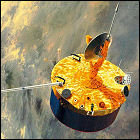 Having received new orders from NASA, the still-functional Pioneer Venus Orbiter – launched in 1978 and in a high, looping orbit over Venus since it ceased active observations of the planet in 1981 – turns its instruments in the direction of Comet Encke, which is currently passing through the inner solar system. Rather than its cameras, the orbiter’s ultraviolet spectrometer is trained on the comet as Earth-based researchers try to determine the composition and rotational speed of Encke’s nucleus. The Pioneer Venus Orbiter will continue to observe other comets through the late 1980s.
Having received new orders from NASA, the still-functional Pioneer Venus Orbiter – launched in 1978 and in a high, looping orbit over Venus since it ceased active observations of the planet in 1981 – turns its instruments in the direction of Comet Encke, which is currently passing through the inner solar system. Rather than its cameras, the orbiter’s ultraviolet spectrometer is trained on the comet as Earth-based researchers try to determine the composition and rotational speed of Encke’s nucleus. The Pioneer Venus Orbiter will continue to observe other comets through the late 1980s.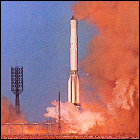 The unmanned Vega 1 space probe is launched by the Soviet Union on a dual mission to drop off a lander at Venus and then to intercept Halley’s Comet in 1986. Derived from the USSR’s earlier Venera Venus landers, Vega will test a refined landing system for landing on Venus by balloon, and will then join an international fleet of unmanned spacecraft attempting to take advantage of Halley’s visit to the inner solar system in late 1985 and early 1986.
The unmanned Vega 1 space probe is launched by the Soviet Union on a dual mission to drop off a lander at Venus and then to intercept Halley’s Comet in 1986. Derived from the USSR’s earlier Venera Venus landers, Vega will test a refined landing system for landing on Venus by balloon, and will then join an international fleet of unmanned spacecraft attempting to take advantage of Halley’s visit to the inner solar system in late 1985 and early 1986.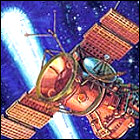 Just days after its twin lifts off, the unmanned Vega 2 space probe is launched by the Soviet Union on a dual mission to drop off a lander at Venus and then to intercept Halley’s Comet in 1986. Derived from the USSR’s earlier Venera Venus landers, Vega 2 will test a refined landing system for landing on Venus by balloon, and will then join an international fleet of unmanned spacecraft attempting to take advantage of Halley’s visit to the inner solar system in late 1985 and early 1986.
Just days after its twin lifts off, the unmanned Vega 2 space probe is launched by the Soviet Union on a dual mission to drop off a lander at Venus and then to intercept Halley’s Comet in 1986. Derived from the USSR’s earlier Venera Venus landers, Vega 2 will test a refined landing system for landing on Venus by balloon, and will then join an international fleet of unmanned spacecraft attempting to take advantage of Halley’s visit to the inner solar system in late 1985 and early 1986.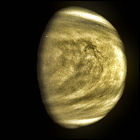 NASA/JPL’s Galileo space probe – eventually bound for Jupiter – reaches the first destination on its looping “
NASA/JPL’s Galileo space probe – eventually bound for Jupiter – reaches the first destination on its looping “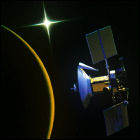 Launched via space shuttle in May 1989, the long-delayed Magellan space probe reaches the planet Venus after an unusually long voyage (15 months) and begins an orbital insertion maneuver. Where most missions to Venus have reached the planet in only a few months, Magellan has had to make do without the more powerful Centaur liquid-fueled booster stage, resulting in a journey of a year and three months. (The Centaur upper stage had been cancelled after the Challenger disaster because it was felt that carrying an additional liquid-fueled rocket in a shuttle cargo bay was too risky.) Magellan is placed into an elliptical orbit, completely circling Venus every three hours, where it will conduct high-resolution radar mapping of the surface at the closest point in its orbit, and transmitting the resulting data to Earth while furthest from Venus. The first phase of the mapping mission will last through 1991.
Launched via space shuttle in May 1989, the long-delayed Magellan space probe reaches the planet Venus after an unusually long voyage (15 months) and begins an orbital insertion maneuver. Where most missions to Venus have reached the planet in only a few months, Magellan has had to make do without the more powerful Centaur liquid-fueled booster stage, resulting in a journey of a year and three months. (The Centaur upper stage had been cancelled after the Challenger disaster because it was felt that carrying an additional liquid-fueled rocket in a shuttle cargo bay was too risky.) Magellan is placed into an elliptical orbit, completely circling Venus every three hours, where it will conduct high-resolution radar mapping of the surface at the closest point in its orbit, and transmitting the resulting data to Earth while furthest from Venus. The first phase of the mapping mission will last through 1991. NASA’s Magellan space probe, orbiting the planet Venus, has completed a checkout phase and begins its primary mapping mission, intended to gather data of the Venusian surface as high resolution as one kilometer per pixel. Rather than using visible light – which would yield only images of Venus’ dense clouds – Magellan uses radar to map the planet’s blistering hot surface. Launched in May 1989 via space shuttle, Magellan will continue mapping the surface of Venus through May 1991.
NASA’s Magellan space probe, orbiting the planet Venus, has completed a checkout phase and begins its primary mapping mission, intended to gather data of the Venusian surface as high resolution as one kilometer per pixel. Rather than using visible light – which would yield only images of Venus’ dense clouds – Magellan uses radar to map the planet’s blistering hot surface. Launched in May 1989 via space shuttle, Magellan will continue mapping the surface of Venus through May 1991.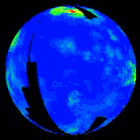 NASA’s Magellan space probe, which has been mapping the planet Venus from orbit since September 1990, completes the first phase of its map-making mission, completing radar imaging of more than 80% of the planet’s surface. NASA authorizes an extended mission, lasting into 1992, which will yield a more complete map of the Venusian surface, including its polar regions.
NASA’s Magellan space probe, which has been mapping the planet Venus from orbit since September 1990, completes the first phase of its map-making mission, completing radar imaging of more than 80% of the planet’s surface. NASA authorizes an extended mission, lasting into 1992, which will yield a more complete map of the Venusian surface, including its polar regions.